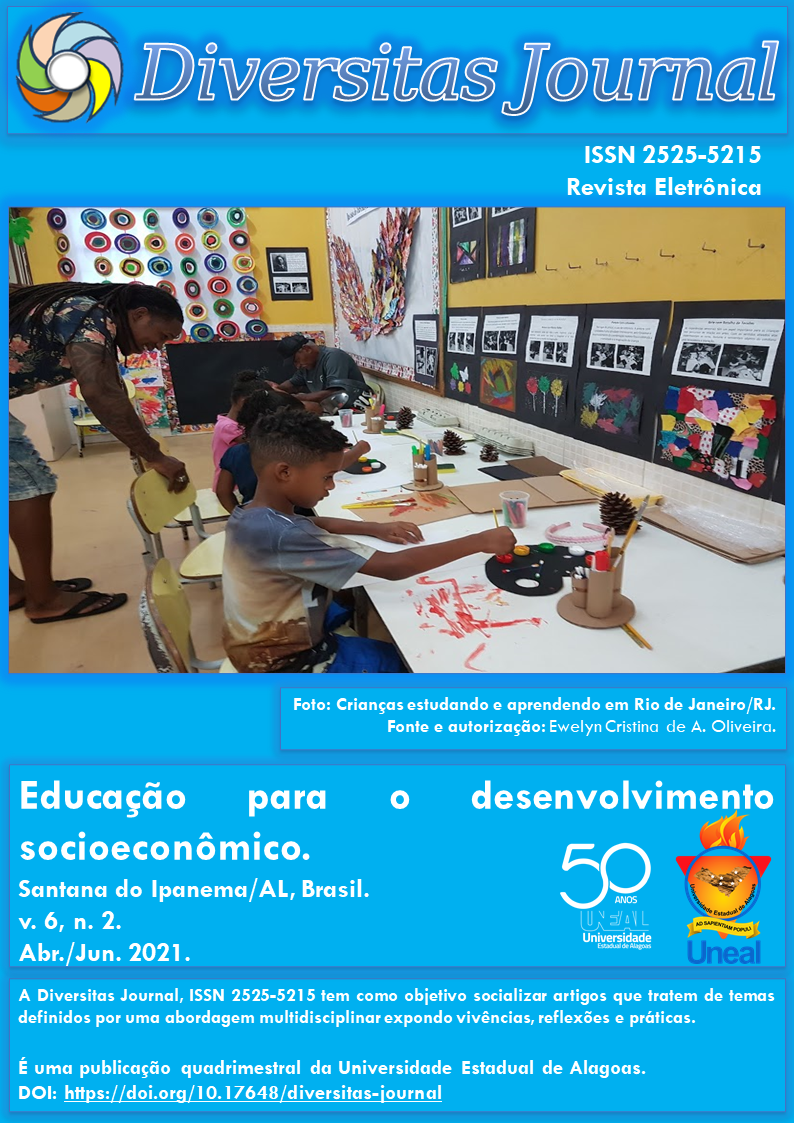Ensino de anatomia humana baseado em aprendizagem ativa
DOI:
https://doi.org/10.17648/diversitas-journal-v6i2-1265Abstract
ABSTRACT: Teaching human anatomy is fundamental for biologic and health courses, but it faces several difficulties, like reduced workload, large classes e lack of cadaveric material. However, the application of active methodologies can help on resolution for these challenges. In this way, it has been objectified report an experience on application of an education activity ruled on active methodologies for human anatomy teaching, as long as show its efficiency by the analysis of the student’s cognitive performance. This is a quali-quantitative study, in which it has been reported the application of a teaching activity called Expoanato, developed by the human anatomy discipline for the Graduation in Biological Science from Federal University of Alagoas (UFAL). Altogether, 17 students have participated. For verify the cognitive performance, the grades obtained on first evaluation (before Expoanato activity) and on second evaluation were compared through paired t test, with significance of 5%. The activity was possible to demonstrate that the Expoanato activity was promising as stimulating group work, creativity, research and review of the teched subjects. Furthermore, it has shown an statistic increase on the second evaluation grades when compared with the first evaluation grades. Thus, the Expoanato activity was important in the teaching and learning process on the human anatomy in the evaluated course. It’s up to the teachers and the higher education institutions the readjustment of the learning models, which need to stop being teacher-centered and start to stimulate the autonomy, creativity and critical sense of the students.
KEYWORDS: Anatomy, Education, Learning.
Metrics
Downloads
Published
How to Cite
Issue
Section
License
Copyright (c) 2021 George Azevedo Lemos, Jade Gama Monteiro, Fernando José Camello de Lima

This work is licensed under a Creative Commons Attribution 4.0 International License.
The Diversitas Journal expresses that the articles are the sole responsibility of the Authors, who are familiar with Brazilian and international legislation.
Articles are peer-reviewed and care should be taken to warn of the possible incidence of plagiarism. However, plagiarism is an indisputable action by the authors.
The violation of copyright is a crime, provided for in article 184 of the Brazilian Penal Code: “Art. 184 Violating copyright and related rights: Penalty - detention, from 3 (three) months to 1 (one) year, or fine. § 1 If the violation consists of total or partial reproduction, for the purpose of direct or indirect profit, by any means or process, of intellectual work, interpretation, performance or phonogram, without the express authorization of the author, the performer, the producer , as the case may be, or whoever represents them: Penalty - imprisonment, from 2 (two) to 4 (four) years, and a fine. ”


















